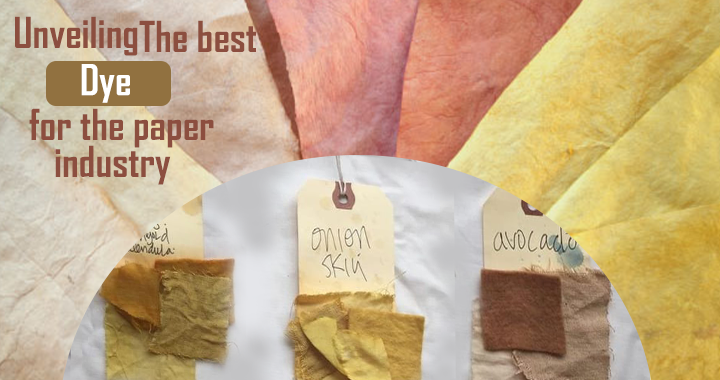Dyes play a vital role in the paper industry, not only adding vibrant colors but also enhancing the functionality and appeal of paper products. From packaging materials to printed materials, dyes are essential for creating visually appealing and engaging experiences. In this blog post, we will explore the importance of dyes in the paper industry and how they contribute to the overall success of various applications.
Visual Appeal:
One of the primary roles of dyes in the paper industry is to enhance the visual appeal of paper products.
Branding and Differentiation:
Dyes are instrumental in creating unique and recognizable branding for companies and products.
Functionality and Product Identification:
Dyes are not only about aesthetics but also serve functional purposes in the paper industry.
Security and Anti-Counterfeiting Measures:
Dyes also play a crucial role in ensuring the security and authenticity of paper products.
Artistic Expression and Creativity:
Dyes offer a wide range of possibilities for artistic expression and creativity in the paper industry.
Choosing the Best Dye
In the paper industry, choosing the best dye is crucial for achieving vibrant and long-lasting colors while maintaining environmental sustainability. With numerous options available, it can be challenging to determine the ideal dye for specific paper applications. In this blog post, we will explore the characteristics of the best dye used in the paper industry, focusing on its versatility, eco-friendliness, color stability, and ease of application.
Water-Based Dyes:
Water-based dyes are often considered the best choice for the paper industry due to their versatility and eco-friendliness. Derived from natural sources such as plants and vegetables, these dyes offer a wide range of colors while minimizing the environmental impact. They are soluble in water, making them easy to apply during the paper manufacturing process. Water-based dyes also provide excellent color saturation and light fastness, ensuring long-lasting and vibrant results.
Pigments:
Pigments are another top contender for the best dye in the paper industry. Unlike dyes, pigments are insoluble particles that are dispersed in the paper matrix. They offer exceptional color stability and light fastness, making them ideal for applications that require durability and resistance to fading. Pigments come in a vast array of colors, including metallic and fluorescent shades, providing versatility and creativity to paper manufacturers.
Acid Dyes:
Acid dyes are synthetic dyes that are soluble in water and widely used in the paper industry. They offer excellent color saturation and fastness properties, ensuring vibrant and long-lasting results. Acid dyes are particularly suitable for specialty papers, such as those used for arts and crafts, luxury packaging, and invitations. They provide a wide range of colors and can be easily applied during the paper manufacturing process.
Optical Brightening Agents (OBAs):
While not a traditional dye, optical brightening agents (OBAs) play a significant role in enhancing the brightness and whiteness of paper. OBAs absorb invisible ultraviolet light and emit visible blue light, making the paper appear brighter. They are widely used in the production of high-quality papers used in printing, publishing, and fine arts. However, it’s important to consider the lifespan of OBAs, as they may degrade over time, leading to a yellowing effect.
Fluorescent Dyes:
Fluorescent dyes are vibrant and intense compounds that emit visible light when exposed to ultraviolet light. They are commonly used in specialty papers to create eye-catching designs or highlight specific elements. Fluorescent dyes offer excellent light fastness and resistance to fading, ensuring long-lasting visual impact. While they may not be suitable for all paper applications, they are highly effective in creating visually striking effects.
In Conclusion, Selecting the best dye for the paper industry requires considering various factors, including versatility, eco-friendliness, color stability, and ease of application. Water-based dyes and pigments are often favoured for their wide color range, environmental sustainability, and excellent light fastness. Acid dyes provide exceptional color saturation and fastness, making them ideal for specialty papers. Optical brightening agents enhance brightness, while fluorescent dyes create eye-catching effects. By carefully evaluating the requirements of each paper application, manufacturers can make informed decisions to achieve outstanding and sustainable results.
